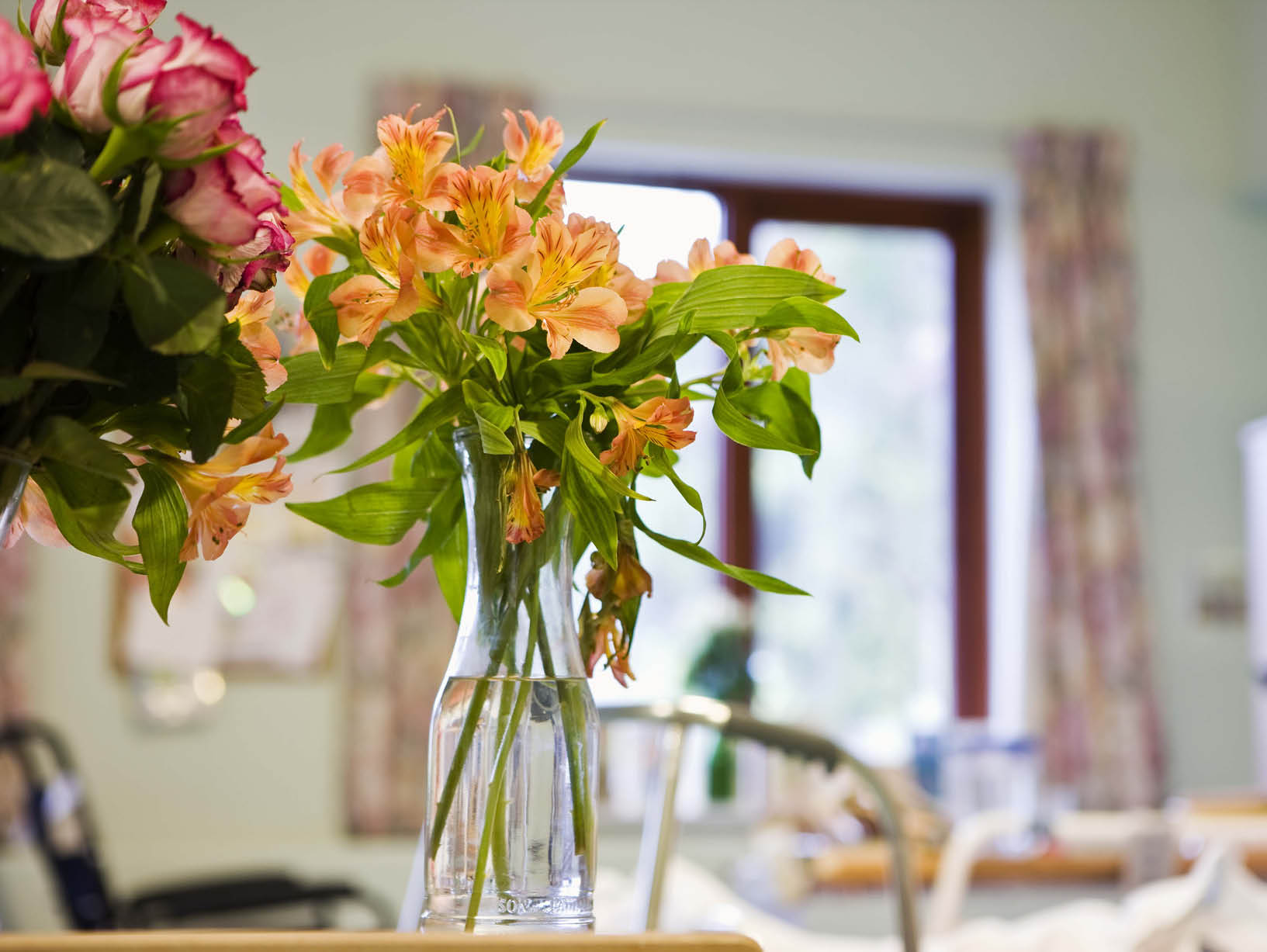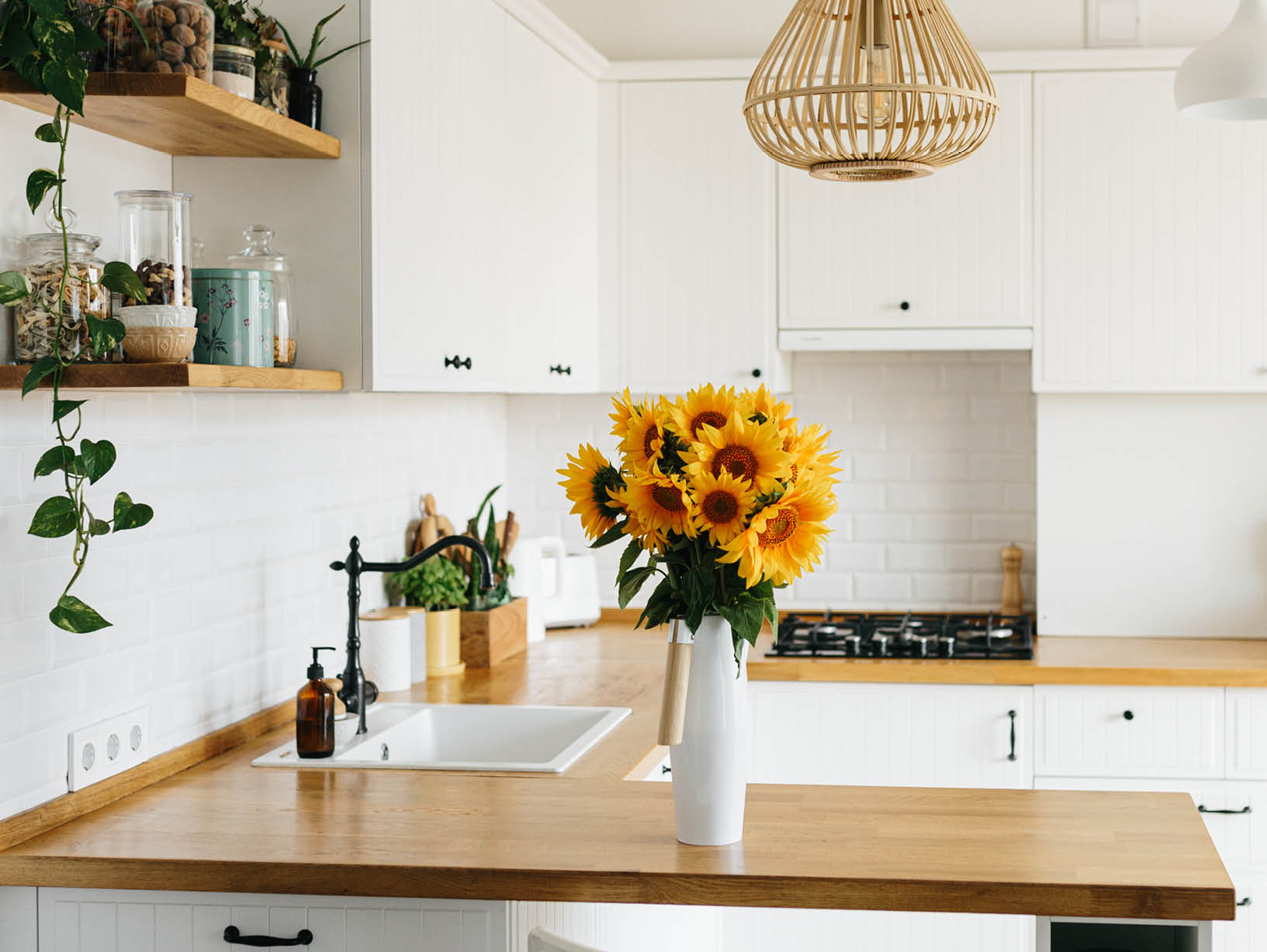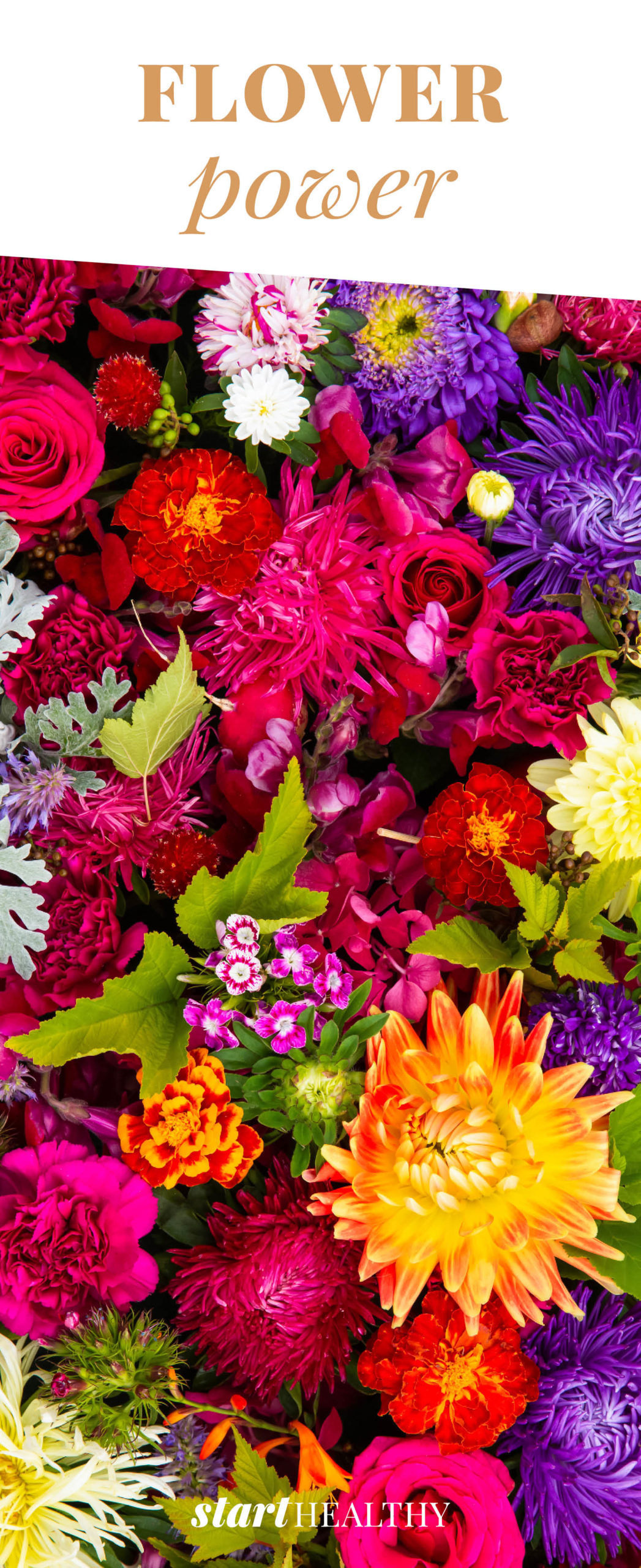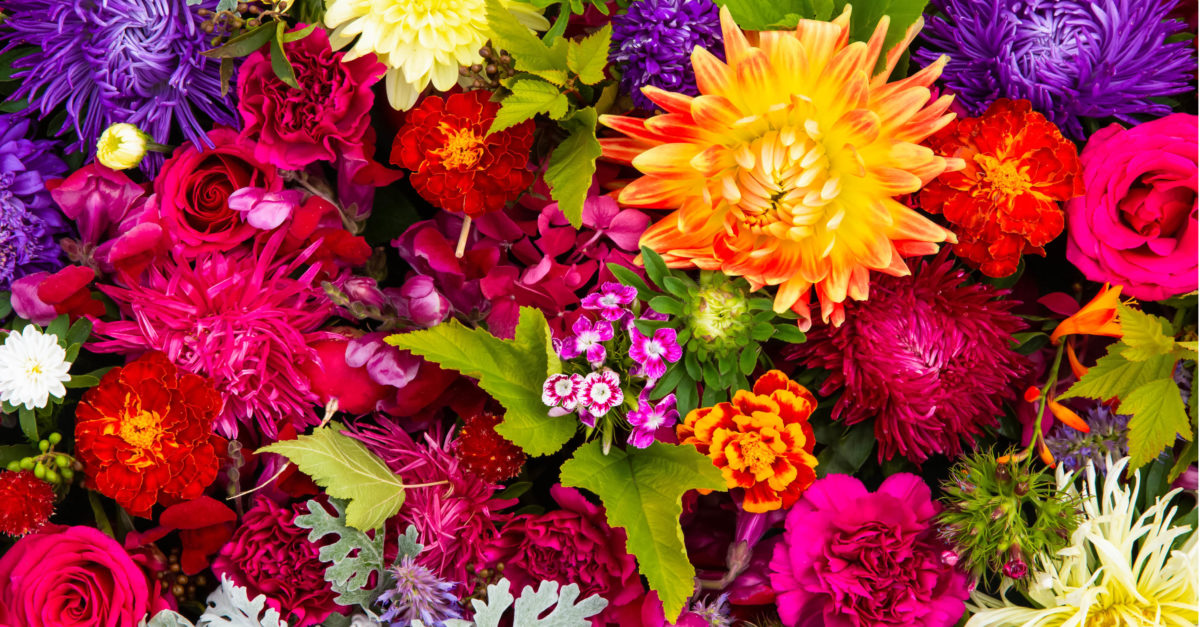Flower Power
Lady Bird Johnson once famously said, “Where flowers bloom, so does hope.” There is certainly a lot of truth behind this statement, especially in light of how they are used for heartfelt gestures.
People give flowers as a sign of love on Valentine’s Day, and they send arrangements to people at work as a pick-me-up, to hospital patients as a get-well wish, and to mourners as a sign of condolence. In virtually every major step in life—a birth, a celebration, a wedding, a passing—flowers tend to be front and center, regardless of who you are or where you live in the world.
Perhaps unbeknownst to most of us, in addition to brightening someone’s day these pretty plants also have a host of health benefits. So we put the “petal” to the metal to find out what exactly makes these perennial people-pleasers so appealing—and how they improve our overall well-being.

A floral record
Plant life has existed throughout human history, and it even outdates us. The oldest flower fossil is thought to be over 130 million years old, although experts believe that flowers go back around 250 million years. Some botanists believe there are now upward of 400,000 different flower types in the world.
As far as humans’ horticultural history, we have used flowers for thousands of years, if not longer. The ancient civilizations of Egypt, Greece, Rome, and China all arranged flowers in distinct ways, and they also used them for a variety of health and wellness purposes—something that we continue to do today.

Blooming better health
Simply put, flowers are essential; life would cease to exist without them. But now science better understands the variety of ways they improve our health.
Mental and emotional benefits
We all know that receiving flowers will often make a person feel better, just by the fact that someone was thinking of them. But flowers also help our brain in other ways. For example, simply staring at a vase of blooms has been shown to reduce depression and anxiety, and flowers can foster relaxation and a happier mood, especially for seniors. In addition, studies have shown that flowers and other plants can help with both focus and memory recall.
Physical benefits
Today, flowers are used in a variety of medicinal ways to help us feel better physically. Honeysuckle, roses, and magnolias, for example, are thought to help with cold symptoms, and flowers like chamomile and lavender are used in teas to promote a sense of calm.
But it goes beyond that. Those aforementioned flowers in a hospital room? They not only lift one’s mood but even have been correlated with less need for pain medications. Some experts also believe that, because plants and flowers are constantly refreshing the air, they help us inhale cleaner air and breathe better overall.

Design based on nature
Perhaps not surprisingly with more people at home in recent years, one of the hottest trends in interior design welcomes nature indoors. This design approach, called biophilic (which means a desire to interact with nature), aims to bring the aforementioned benefits to businesses and homes alike. Natural colors, shapes, and patterns are the focal point of biophilic design, and natural plants and light are emphasized.
Even though this mindset has been around since the mid-1980s, companies such as Adobe, Amazon, Carvana, Microsoft, and United Technologies have incorporated it into their office designs in recent years. Employees working in such environments report better well-being, more productivity, and less stress, and they tend to miss less time at work. Design firms themselves are incorporating it into their own spaces, and some specialize exclusively in it.
With more people working from home permanently, it’s the perfect time to integrate biophilic decor into your home. Here are some ways to do so:
- Bring as much natural sunlight into your home as possible—it’s good for you and all the greenery you’ll add—and buy wood furniture (such as bamboo) for a more natural look and feel.
- Make use of corners, where you can place potted floor plants without having to worry about their height.
- A bedroom should be a calming oasis, so make it just that by hanging plants or placing small plants or flowers on bookshelves.
- Many flowers and plants thrive in humidity, so what better place to have them than in the bathroom? You can accentuate this with natural linens and bath mats.
- Add a small herb garden to your kitchen or dining room, and place it somewhere where it will get plenty of light. And, of course, the kitchen table is a great place for flowers.
- If you have a home office, it may be more set off from the rest of the house. Try to face your workspace toward a window so you can easily see outside, and add flowers or other greenery to give it an outdoors vibe.
In a very real sense, flowers are one of the few natural cure-alls of our world. They add not only color but hope to our lives. They help sustain the planet and our well-being. They inspire us and uplift us, and they remind us about all the good in the world.









